The GIGABYTE Z390 Aorus Master Motherboard Review: Solid, But Not Special
by Gavin Bonshor on March 21, 2019 12:30 PM EST- Posted in
- Motherboards
- Intel
- Gigabyte
- ATX
- LGA1151
- i7-8700K
- Z390
- Aorus Master
CPU Performance, Short Form
For our motherboard reviews, we use our short form testing method. These tests usually focus on if a motherboard is using MultiCore Turbo (the feature used to have maximum turbo on at all times, giving a frequency advantage), or if there are slight gains to be had from tweaking the firmware. We put the memory settings at the CPU manufacturers suggested frequency, making it very easy to see which motherboards have MCT enabled by default.
For Z390 we are running an updated version of our test suite, including OS and CPU cooler. This has some effect on our results.
Rendering - Blender 2.78: link
For a render that has been around for what seems like ages, Blender is still a highly popular tool. We managed to wrap up a standard workload into the February 5 nightly build of Blender and measure the time it takes to render the first frame of the scene. Being one of the bigger open source tools out there, it means both AMD and Intel work actively to help improve the codebase, for better or for worse on their own/each other's microarchitecture.
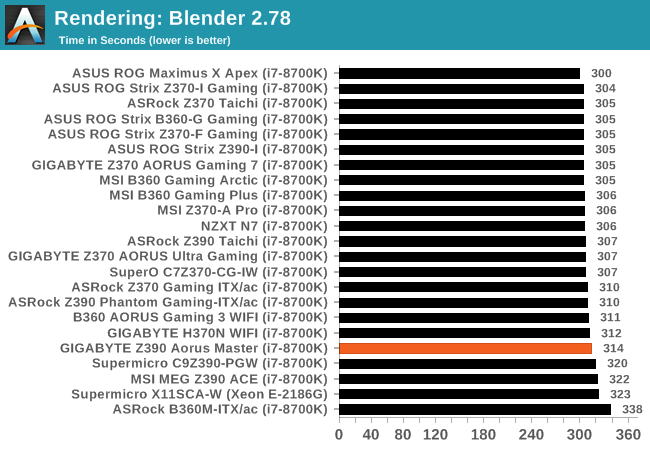
Streaming and Archival Video Transcoding - Handbrake 1.1.0
A popular open source tool, Handbrake is the anything-to-anything video conversion software that a number of people use as a reference point. The danger is always on version numbers and optimization, for example the latest versions of the software can take advantage of AVX-512 and OpenCL to accelerate certain types of transcoding and algorithms. The version we use here is a pure CPU play, with common transcoding variations.
We have split Handbrake up into several tests, using a Logitech C920 1080p60 native webcam recording (essentially a streamer recording), and convert them into two types of streaming formats and one for archival. The output settings used are:
- 720p60 at 6000 kbps constant bit rate, fast setting, high profile
- 1080p60 at 3500 kbps constant bit rate, faster setting, main profile
- 1080p60 HEVC at 3500 kbps variable bit rate, fast setting, main profile
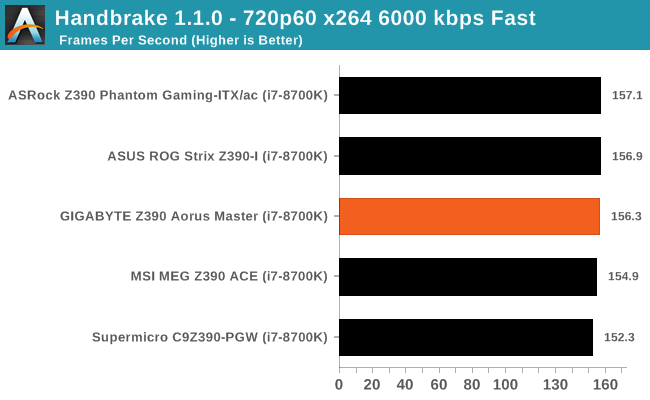
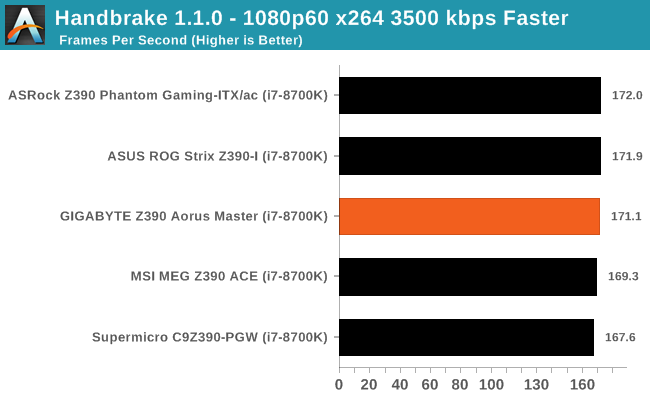
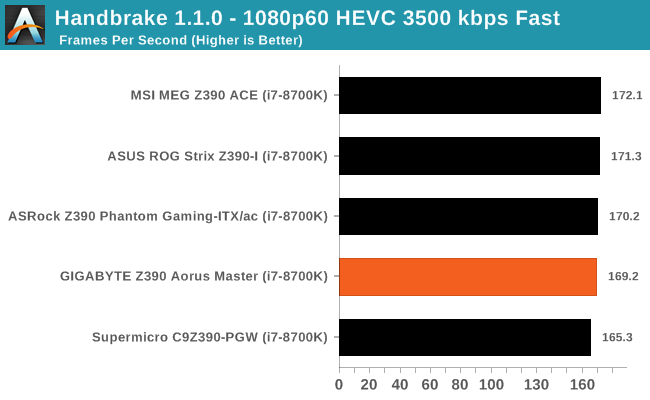
Rendering – POV-Ray 3.7: link
The Persistence of Vision Ray Tracer, or POV-Ray, is a freeware package for as the name suggests, ray tracing. It is a pure renderer, rather than modeling software, but the latest beta version contains a handy benchmark for stressing all processing threads on a platform. We have been using this test in motherboard reviews to test memory stability at various CPU speeds to good effect – if it passes the test, the IMC in the CPU is stable for a given CPU speed. As a CPU test, it runs for approximately 1-2 minutes on high-end platforms.
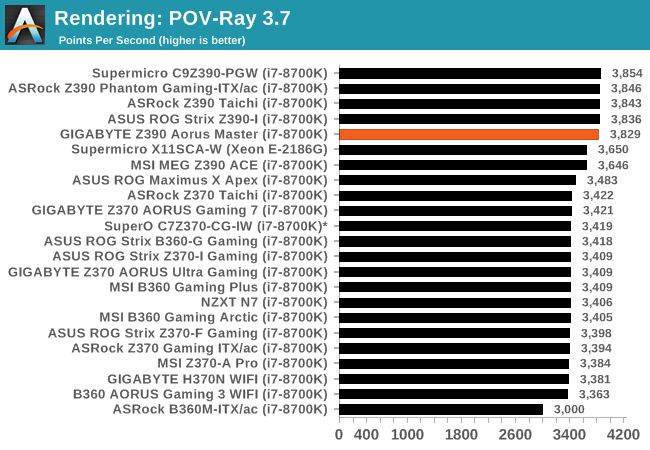
Compression – WinRAR 5.4: link
Our WinRAR test from 2013 is updated to the latest version of WinRAR at the start of 2014. We compress a set of 2867 files across 320 folders totaling 1.52 GB in size – 95% of these files are small typical website files, and the rest (90% of the size) are small 30-second 720p videos.
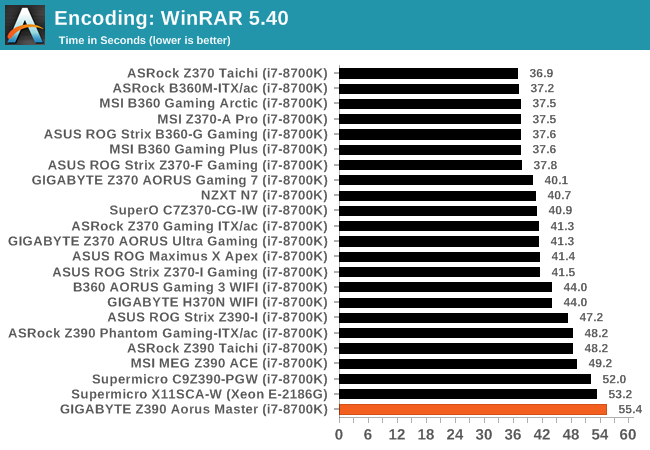
Synthetic – 7-Zip 9.2: link
As an open source compression tool, 7-Zip is a popular tool for making sets of files easier to handle and transfer. The software offers up its own benchmark, to which we report the result.
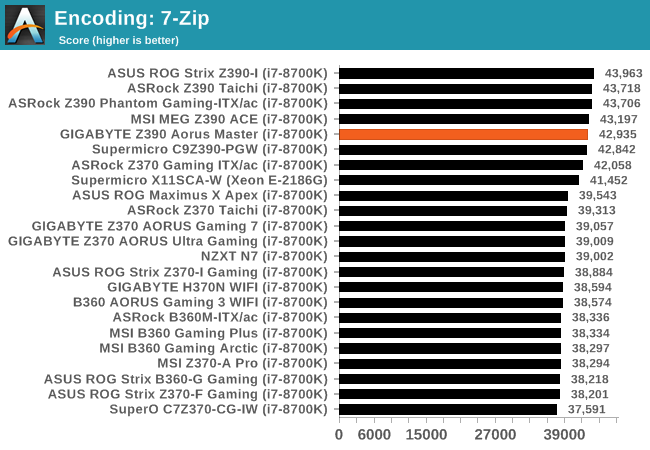
Point Calculations – 3D Movement Algorithm Test: link
3DPM is a self-penned benchmark, taking basic 3D movement algorithms used in Brownian Motion simulations and testing them for speed. High floating point performance, MHz, and IPC win in the single thread version, whereas the multithread version has to handle the threads and loves more cores. For a brief explanation of the platform agnostic coding behind this benchmark, see my forum post here.

Neuron Simulation - DigiCortex v1.20: link
The newest benchmark in our suite is DigiCortex, a simulation of biologically plausible neural network circuits, and simulates activity of neurons and synapses. DigiCortex relies heavily on a mix of DRAM speed and computational throughput, indicating that systems which apply memory profiles properly should benefit and those that play fast and loose with overclocking settings might get some extra speed up. Results are taken during the steady-state period in a 32k neuron simulation and represented as a function of the ability to simulate in real time (1.000x equals real-time).
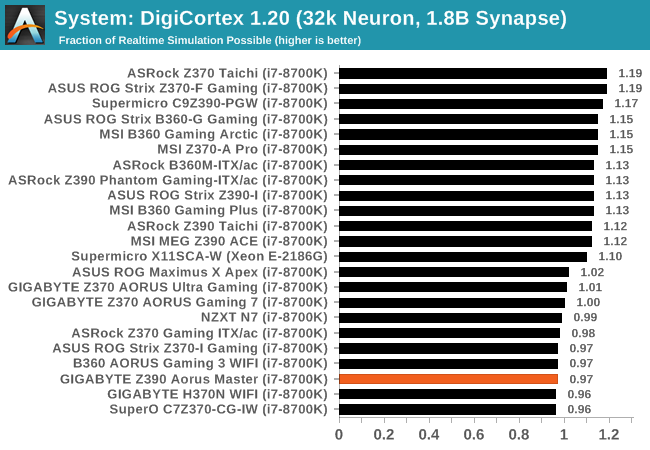










36 Comments
View All Comments
El Sama - Thursday, March 21, 2019 - link
Comes with a solid VRM, unlike Asus fake Phases VRM.TelstarTOS - Thursday, March 21, 2019 - link
This.gavbon - Thursday, March 21, 2019 - link
It's a solid power delivery; nothing wrong with using doublers and GIGABYTE are very clear in their marketing too. I wish all the vendors followed this practice!sonny73n - Friday, March 22, 2019 - link
I went to Gigabyte website for this board and saw that they claim it’s a true 12 phase VRM.But Anandtech says “the GIGABYTE Z390 Aorus Master is highly competitive with its power delivery design (doubled six-phase)”.
So Gigabyte bullshit AGAIN. I hope your wish won’t come true.
iohlighi - Monday, March 25, 2019 - link
There's a difference between using doublers, which are additional components to split a phase into two phases, and just adding two of each component to a single phase which is what people are referring to with asus here. With doublers, they are indeed out of phase with each other as needed to be considered a phase. The downside of doublers vs dedicated phases without doublers is there is no load/temp balancing between the two doubled phases because the controller sees it as just one.JlHADJOE - Wednesday, March 27, 2019 - link
A properly doubled 6-phase *is* a true 12-phase.If the output of the PWM is A B C D E F, then a Gigabyte puts a doubler on each PWM output, and an output stages on each of the doubler's outputs, so the final result becomes something like A1 A2 B1 B2 C1 C2 D1 D2 E1 E2 F1 F2. Each sub-phase is a proper time slice.
ASUS on the other hand is sneaky and simply wired two output stages to each of the PWM's four output channels on their boards, so A B C D from the PWM simply becomes AA BB CC DD.
sonny73n - Friday, March 22, 2019 - link
I’ve seen more fake phases VRM from Gigabyte than any others. Even tho Gigabyte claims this board has 12 true phases, I wouldn’t believe them. And sure Gigabyte boards can OC to 5Ghz but core voltage would be 1.5v, temp will be more than 100C and crash as soon as your game loads.Go to Newegg for buyers’ reviews. Gigabyte customer service as well as OCing ability are horrible.
sonny73n - Friday, March 22, 2019 - link
Sorry not all Gigabyte boards are as bad as I said. It’s only about 90% of them and this is not silicone lottery.JlHADJOE - Wednesday, March 27, 2019 - link
Gigabyte's Z390 Aorus line is legit (unlike their previous Z370 series). Buildzoid took a very in-depth look at this board and the VRMs get his seal of approval.https://youtu.be/6J7qnr0YNH8?t=571
Linked timestamp is at start of VRM analysis
shaolin95 - Thursday, April 4, 2019 - link
nonsense...talking BS without actually researching. Go cry home Asus fanboy